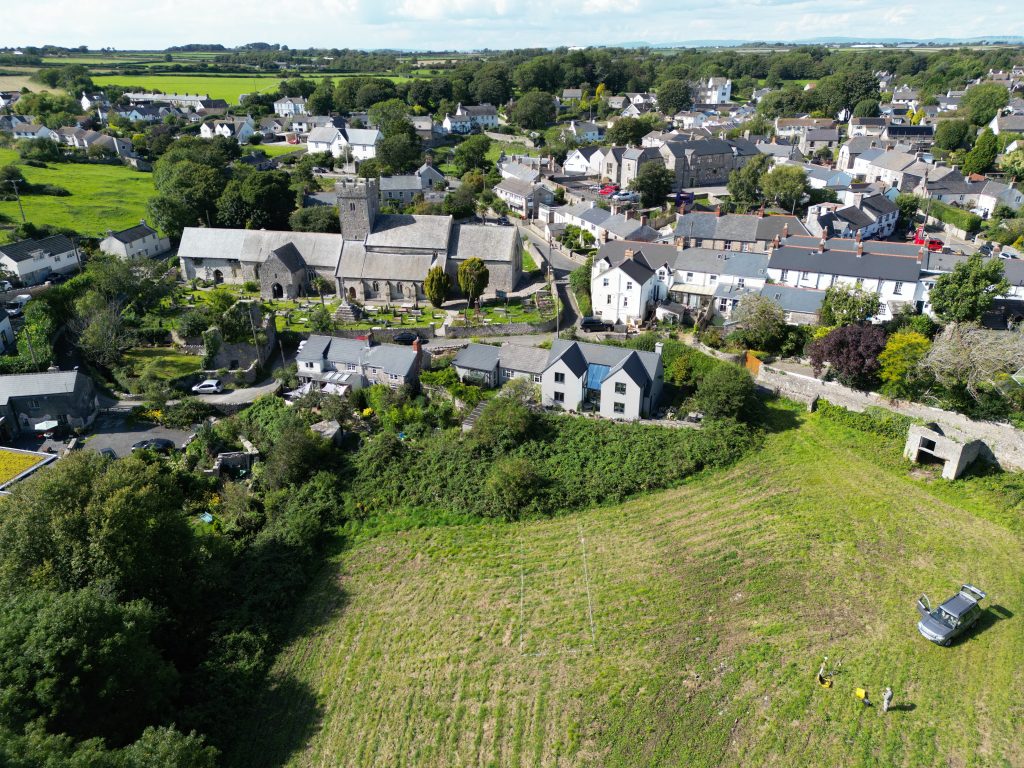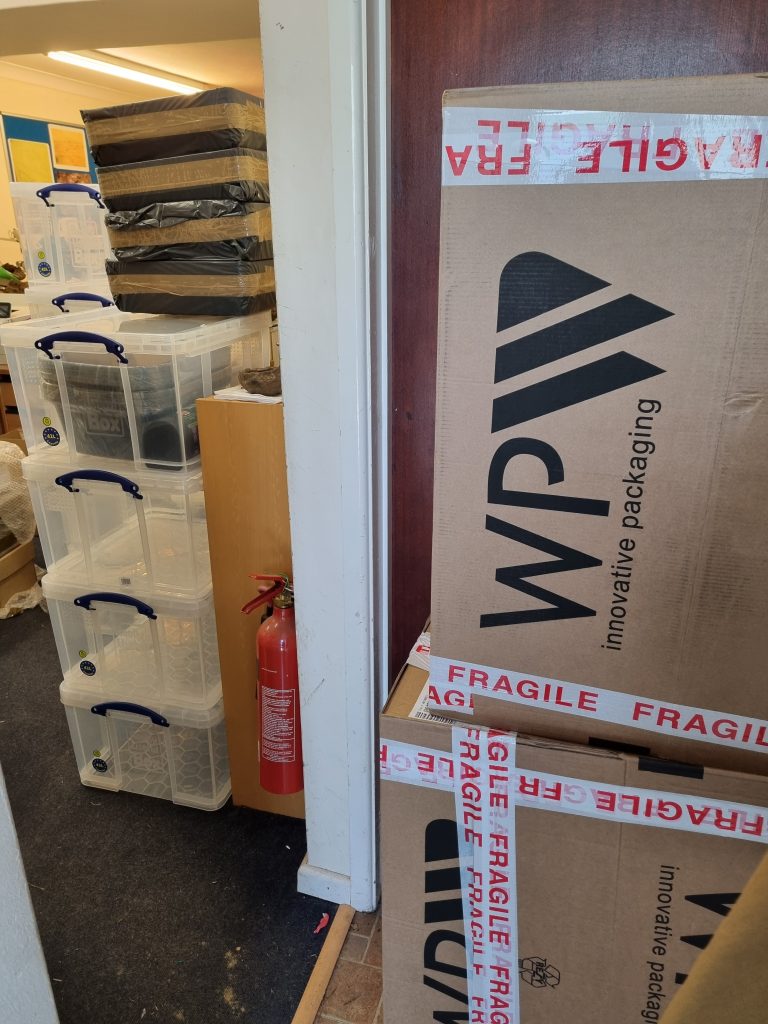
The 2024 excavation season in The Globe Field, Llantwit Major, will run from 20th May until 14th June. As in 2023, this is a training dig for Cardiff University archaeologists, but we will be welcoming volunteers into the project too. Digging will take place on weekdays only.
Background
The blog for the 2023 season contains a lot of background information on the site and links to various internet resources, so anyone interested should check those.
The research goal of the project is to provide some clarity on the nature of the early medieval monastery at Llantwit – and in that endeavour the university is supported by the ‘Dr DG Smith Memorial Fund’. The project started with much geophysical survey and out of that work it was possible to propose a possible extent for the early medieval monastic enclosure.
The excavations in The Globe Field were designed to investigate a series of stone banks or walls, that subdivide this enclosure internally.
Provisional results from the 2023 dig
The results of the 2023 excavations are not yet fully compiled (switching from an August/September dig to a May/June timing meant a rather short winter for the post-excavation studies to be completed!), but a tentative story for the development of the site is emerging (although it might easily be altered by the results of the 2024 season!)..
The earliest activity detected in 2023 was part of what was probably a small gully, containing some metalworking waste and a moderate quantity of charred wheat. This wheat was radiocarbon dated to cal. AD 596 – 664. This date is excitingly early – although significantly later than the time of Illtud (usually interpreted to have lived very approximately AD460 – 525) and Samson (very approximately AD 490-565), it probably predates the visit of Samson’s biographer to Llantwit (probably AD 680×700).
As the fame of Llantwit as the cult centre of Illtud, and probably as a burial ground for the kings of Glywysing, grew so a large area appears to have been given over to burial. West of the stream at the Globe Field there are burials of the mid-7th to late 8th centuries, the 2023 excavation produced an infant burial of the 8th-9th centuries as well as a substantial amount of disarticulated bone eroded from somewhere up slope (including a femur with a similar radiocarbon date to the in-situ infant). Undated burials were found at the Hayes in the 1860s. The late 8th to 9th century is also the period of the inscribed stones now in the Galilee Chapel, suggesting that high status burials were focused on the modern church site.
After the 9th century, the site in The Globe Field appears to have been used for livestock, perhaps pigs, and significant erosion occurred during thee 10th and 11th centuries (including of earlier graves). This occurred at a time when the documentary evidence for Llantwit also breaks down – there are no more written references to an Abbot for instance. The focus of local secular power may have moved eastwards, the forces of Dyfed invaded Glywysing in the mid-10th century and the site may have lost royal patronage.
A complete change of land-organisation and land-use was marked by the creation of a network of drystone field walls (the features that had attracted us to the site in the first place). These walls, each 70-80cm thick, bounded a series of small fields and currently appear to date from around the time of the Norman invasion (c. AD 1100). They may reflect major changes brought to site either following the granting of the church to Tewkesbury Abbey or from the influence of the rise of Llandaff Cathedral. The ‘Life’ of St Illtud, written at around this same time, certainly shows a rather pro-Llandaff agenda, as well as a clear intent to stimulate pilgrimage. These fields show the development of lynchets – in which soil moves downslope (usually because of tillage), eroding at the upper edge of the field and accumulating at the bottom of the field, that developed rapidly during the 12th century.
The network of small arable fields does not appear to have survived long. The build up of the lynchets probably caused the stone walls to collapse by the end of the 13th or early in the 14th century.
The later history of The Globe Field appears to have been mainly as a pasture, except for the eventual subdivision of the field to provide a vegetable garden in its southern half.
The plan for 2024
The aim for the 2024 season is to examine a much wider area of the early features than was possible in 2023. To achieve this, the ‘L’-shaped trench will largely avoid the medieval stone walls that were studies in detail in 2023. The ‘L’-shape is intended to provide both a transect down the slope towards the stream as well as an ‘along-slope’ element to join up the areas at either end of the 2023 trench that showed such different sequences.
Blog
15/04/24: after a busy weekend at the Cardiff University Conference on Medieval Wales, at which a summary of last year’s work was presented, focus now shifts to this season. It is getting hard(er!) to move around the office as the deliveries of consumables for the excavation arrive. The students arrive on site 5 weeks today.
